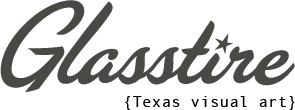John Arnone: I Am the Space Where I Am, at Hawn Gallery, Hamon Arts Library, Southern Methodist University, Dallas, March 27–May 19, 2025
The Hawn Gallery at Southern Methodist University’s (SMU) Hamon Arts Library presents I Am the Space Where I Am, a solo exhibition showcasing the work of acclaimed scenic designer John Arnone. This focused survey presents production materials from several major theatrical works Arnone has designed throughout his career. Included in the exhibition are original scenic illustrations, architectural drafts, color studies, and promotional graphics that illuminate the creative process behind some of his most notable stage designs.
Featured productions include: Candide (1981), directed by Garland Wright; How to Succeed in Business Without Really Trying (1995), directed by Des McAnuff; and The Grand Manner (2010), directed by Mark Lamos.
Materials on view range from fabric swatches and structural design plans to typographic studies and documentation of completed stage sets. The exhibition offers a behind-the-scenes look at Arnone’s holistic approach to stage design, highlighting his fluency in translating narrative and space into cohesive visual environments. Rather than treating scenic elements as isolated backdrops, Arnone engages each component — color, texture, scale, and typography — as part of a larger dramaturgical system. His designs account not only for visual impact, but also for actor movement, audience perspective, and the emotional rhythm of a scene. This layered process results in stage worlds that feel both immersive and narratively attuned, where every element serves the story’s atmosphere and arc.
For students of theater, scenic design, and visual communication, I Am the Space Where I Am serves as a valuable case study in professional stagecraft. The show emphasizes how multiple disciplines — architecture, graphic design, fine art, and theatrical storytelling — intersect in the work of a scenic designer. As a viewer, the exhibition clarifies how each design decision — down to a color swatch or a hand-drawn elevation — shapes the emotional and spatial logic of a performance, deepening my understanding of how theatrical worlds are built from the ground up.
John Arnone: I Am the Space Where I Am is on view at the Hamon Arts Library through May 19, 2025. Admission is free and the show is open to the public during regular library hours.
****
Simon Petepiece’s Open Studio at 100 West Corsicana, Floor 3, April 26, 2025
For his residency at 100 West Corsicana, Simon Petepiece turns the vocabulary of construction inside out. During his open studio last month, he presented a body of work built almost entirely from drywall and metal studs — the humble materials of architecture reimagined with near-religious intricacy. In the center of the room, a skeletal cloister-like structure made of curved and crimped studs arched into space, concluding in a wall-sized rosette motif that was both devotional and industrial.
Elsewhere, paintings made from exposed drywall panels depicted interior scenes with an internal, abstract logic. Petepiece, who once wrote his thesis on drywall, treats the gypsum-core substrate with reverence: papery surfaces peel back to reveal a chalky underlayer, occasionally framed with gleaming steel. His sensitivity to the visual potential of modular repetition — stacked studs, punctuated dimples — suggests an intuitive blend of ornament and utility, rawness and refinement.
****
Psychic Fissures, Arc Gallery, Deep Ellum, Dallas, April 26–May 26, 2025
In Deep Ellum, where new galleries can disappear faster than they appear, Arc Gallery has opened with Psychic Fissures, a group exhibition curated by artist and University of Texas at Dallas (UTD) graduate student Scott Tucker. It’s a show defined less by aesthetic cohesion and more by emotional stakes. Tucker frames the show as a gesture of trust — between artist and curator, artist and audience, and artists with each other. The result is messy, searching, and raw, in a way that feels unusually sincere for a city accustomed to gloss.
The gallery itself is scrappy, still smelling faintly of drywall compound, and still evolving: there are plans to build a maker space in the back and to host working artists in the front. This spirit of provisional openness shapes the show itself. Psychic Fissures isn’t concerned with polish — it’s about lived experience, grief, and the process of making art as a form of navigation.
Tucker includes his own painting, a piece made in the aftermath of his father’s death. He speaks plainly about the work: its vulnerability, its need to exist. This kind of authorial transparency sets the tone for the rest of the exhibition.
Among the standouts is Zachariah Qureshe’s video piece, Zyndagi — a Hindi-Urdu word for life, spelled with a Y in a nod to the nicotine brand Zyn. The video compiles scenes from existing films that trace a common thread of self-destructive behavior, stitched together as a meditation on suicide, melancholy, and cultural memory. The piece hovers between poetics and pastiche, and its candor is striking: a QR code links to a PDF with every sourced film listed, resisting any illusion of authorship-as-oracle. Qureshi’s work is a digital-age elegy, which acknowledges the constructedness of popular images and still asks them to mean something personal.
Elsewhere in the gallery, a polygonal humanoid sculpture sits with its face in its hands — a near-caricature of despair that is oddly affecting. Boatran Vo, a Vietnamese MFA student also at UTD, contributes works in wood, resin, glass, and metal that hint at diasporic memory.
This is an exhibition about instability: emotional, psychic, professional. The fractures between art school and the art world. Between personal process and public presentation. Between deep sincerity and the digital-age compulsion to “curate” even our most painful experiences.
Tucker’s sincerity is apparent here. He’s building a space where emotional honesty matters more than career polish. Psychic Fissures doesn’t so much stake out a position in the art world as refuse one, in favor of something softer, stranger, and more vulnerable.
Psychic Fissures is on view at Arc Gallery in Dallas through May 26, 2025.






